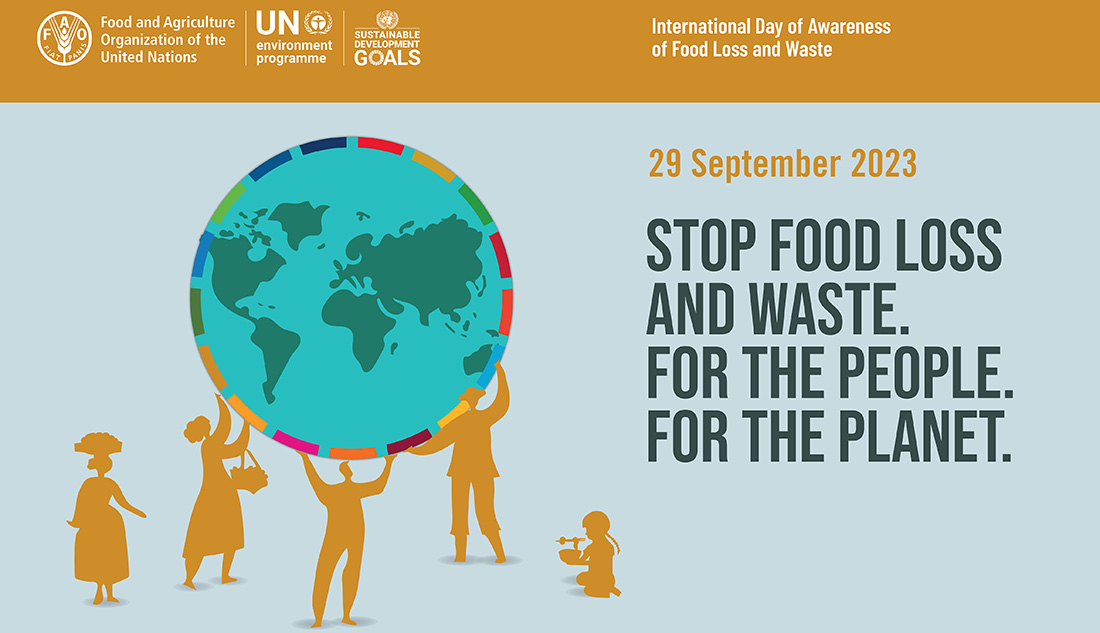
AIP encourages industry to recognise the International Day of Awareness of Food Loss and Waste on 29 September
This annual event was developed by the Food and Agriculture Organisation (FAO) of the United Nations and makes a clear call to action for both the public and the private sectors to bolster efforts to reduce food loss and waste toward ensuring food security for all and particularly the most vulnerable.
Recognising the international day of awareness of Food Loss & Waste makes logical sense to the AIP as they are a Member of Save Food Org, a Member of Friends of Champions 12.3, a core participant of the Fight Food Waste Cooperative Research Centre, a founding association of Stop Food Waste Australia and a supporter of the Australian Food Pact.
According to Executive Director of the Australian Institute of Packaging (AIP), Nerida Kelton FAIP, ‘With Australia producing 7.6 million tonnes of food waste across the supply and consumption chain and a Federal Government National Food Waste Strategy to halve food waste that goes to landfill by 2030 now is the time for packaging technologists to review pack designs to minimise food waste and loss,”
“Packaging plays such an integral role in preventing and or minimising food waste. The primary purpose of packaging is to contain, protect, preserve, promote and communicate, handle and transport and provide convenience for a product; all the while ensuring the safe delivery of food to the consumer. Without adequate packaging design features food can potentially be wasted all the way through the supply chain to the consumer. By modifying packaging designs and ensuring that the save food packaging guidelines are followed food waste and loss can be minimised,”
“The AIP have been working on guidelines that will help Packaging Technologists to design Save Food Packaging to minimise food waste from paddock to plate using innovative and intuitive design features that can contain & protect, preserve, extend shelf life, easily open and reseal, provide consumer convenience and portion control; all the while meeting global sustainable packaging targets. The implementation of Save Food Packaging design criteria and communication material will lead to better packaging design, material and format selection to assist retail, food service and consumers to minimise and prevent food waste.” she said.
AIP President, John Bigley MAIP added that “This day is important for us all to recognise and highlight the huge global issue that continues to challenge us. There are so many starving and malnourished fellow humans around the world, yet we continue to waste food at record levels and added to that food waste has a massive impact on GHG emissions. Even in our own backyard in Australia 1 in 5 shopping bags of food are wasted creating around 2.5MT household food waste. The AIP is proud to be a packaging partner of the Save Food Packaging Consortium as we recognise that packaging plays a significant role in saving food from unnecessary waste. Packaging’s prime purpose is to protect, preserve and extend shelf life, whilst ensuring best usage of the foodstuff all helping to minimise food waste. The Institute continues to support the drive improvements in packaging design to fight food waste in our region and that comes through a potent mix of innovation and collaboration.”
According to Michael Dossor MAIP, Group General Manager, Result Group and one of the founding partners of the AIP Save Food Packaging consortium, “The International Day of Awareness of Food Loss & Waste holds profound significance for Result Group, as we have been diligently engaged in numerous initiatives geared towards reducing food waste and aligning with our ambitious Food Waste Goals 2030.
“Packaging takes on a critical role in this effort, working to protect food, prolong its freshness, and reduce spoilage during storage and transportation. It forms the foundation of our endeavours to advance a world that is both sustainable and free from food insecurity. Our initiatives aim to introduce a sustainable future, including exploring packaging alternatives that go beyond traditional packaging methods. Through our collaborative group efforts targeted at reducing food waste, we aspire to achieve concrete outcomes. We keep nurturing a sense of accountability and heightened consciousness within the industry, illustrating the potency of collective action in addressing one of the world’s most pressing challenges: FOOD WASTE.” he said.
The AIP encourages everyone to try and implement a few easy tips to minimise food waste and use the hashtags #Australianinstituteofpackaging and #FLWDay. What will you be doing to minimise food waste?
TIPS TO REDUCE FOOD WASTE
- Learn the difference between A Use By date and a Best before Date. Share this knowledge with your workplace, friends and family hf
- Buy resealable packaging
- Look at innovative ways to use leftovers in more meals
- Buy Freezer ready meals
- Buy smaller packs that suit your household numbers
- Plan Ahead and only buy what you need
- Don’t cook more than you need
- Store Food in the right places e.g.: freezer vs refrigerator vs room temperature
- Set your refrigerator to the correct temperature
- ALWAYS donate extra food to neighbours, friends or foodbanks
- Compost your food waste
- Get some chickens
- Nominate a few Meat Free Days during the week
If you would like to better understand Save Food Packaging Design and how to use the guidelines then please contact the AIP today.
